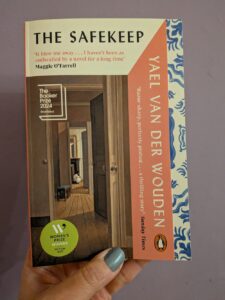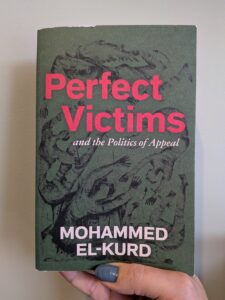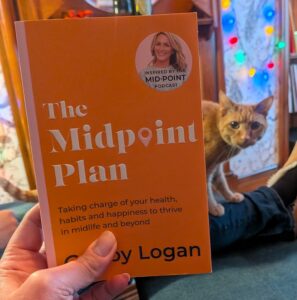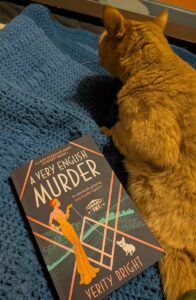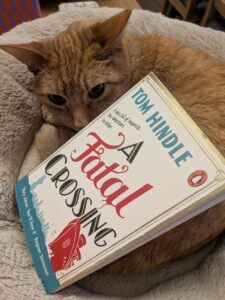The Safekeep by Yael Van Der Wouden
Written by Ashley Kelmore, Posted in Reviews
Lots of spoilers below (though I don’t spoil the unexpected plot point in part three).
In a nutshell:
Isabel is forced to share her home with her brother’s girlfriend Eva, and Isabel is not one to share. But events transpire, and plots twist, and lives change.
Best for:
People who appreciate good writing and storytelling and who aren’t deterred by very descriptive sex scenes.
Quote that made me think:
“Isn’t that strange, how that works? You can think something that used to be true but isn’t true anymore but still believe it in your bones.”
Why I chose it:
My partner and I only exchange books for Christmas, and this was one he picked out for me.
Review:
This book is broken down into three parts. The first part is a lot of build up and setting the scene. We learn about Isabel – this is all from her perspective. We learn she and her family left Amsterdam during the war and relocated to this home – Isabel, her mother, and her two brothers. Her mother has died, and her Uncle has left it to her brother Louis, but Louis is letting Isabel live there until he decides to settle down,.
Isabel is unyielding. She is controlling, and severe. She reluctantly goes on dates with a neighbor occasionally, but she has no friends to speak of, is harsh to the maid who keeps up the house, and is judgmental of everyone. Then Louise needs to go away for a month, and asks Isabel to host Eva. Eva appears to be everything Isabel is not – bit whimsical, kind, extroverted. Of course things are going to clash.
But the end of the first part / start of the second part, readers can see where this is going. Spoilers kick in here …
Eva and Isabel find themselves attracted to each other. It’s intriguing and well written (though not surprising at all). There is also quite a lot of sex in this part, and I’ve never been a fan of reading sex scenes. I understand why the author includes them, and I’m not sure how the book could exist with even watered down versions of these sections – it teaches us a lot about who these women both are. But that doesn’t change the fact that I really had to force myself to keep reading, as I wanted to see what would happen next. And to be clear in case it isn’t – I don’t like reading sex scenes between or among any variation of genders. I’m sure I could talk through it in therapy or something but eh, usually it’s not an issue in books I choose for myself.
The thing is I am so glad I kept reading, because part three is extraordinary. I didn’t see it coming, it was so well written, and I just was stunned by it. Without spoiling this part, I will just say that it was such an interesting exploration of trauma, and responsibility, and what we owe to others once we have all of the information.
Would I recommend it to its target audience:
Yes, if you don’t mind a lot of spicy bits in the middle.
